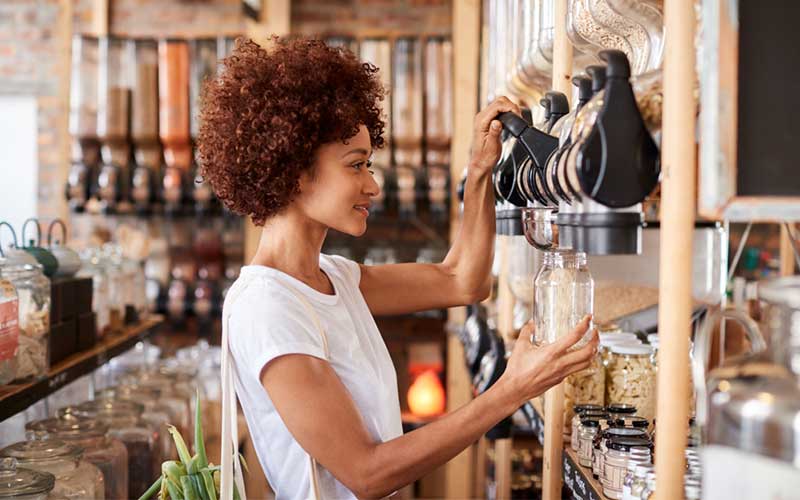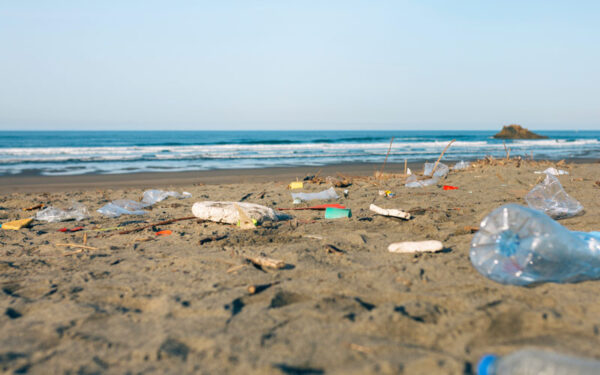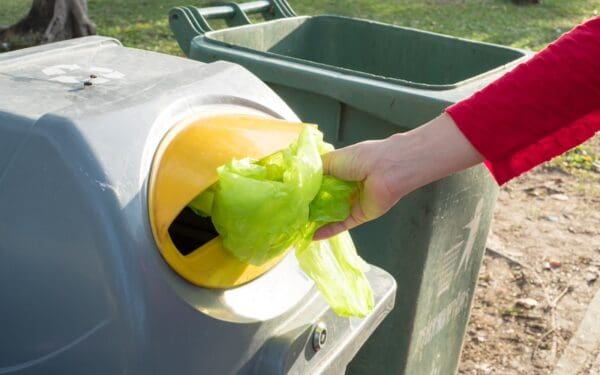
Zero Waste programs work! Plus they'll save us money, create green jobs, and protect the environment. Photo Credit: Shutterstock
Zero Waste.
It’s another one of those environmental buzzwords that has emerged over the past few years. Many people associate the term “Zero Waste” with a lifestyle – usually, someone who can fit a whole year’s worth of trash into a single mason jar. Now don’t get me wrong, it’s amazing that some people are able to do that, but it feels more-or-less unattainable for the rest of us.
The biggest problem with that mason jar image, though, is its focus on individuals making drastic lifestyle changes. It doesn’t get to the core of our country’s waste issues – the systems we use to manage our trash.
So, is that larger, systemic idea of Zero Waste – generating little to no trash as a society – actually possible? Yes! Zero Waste programs will save us money, create green jobs, and protect the environment! But to achieve Zero Waste, we need to stop looking at it as just a lifestyle and start looking at it as a strategic concept for managing our waste – and tackling the trash crisis.
The Key Ingredients to Achieving Zero Waste
Zero Waste has an official definition, courtesy of the International Zero Waste Alliance, but here’s what’s important for you to remember: Zero Waste is about phasing out polluting trash systems, like landfills and incinerators, that poison our environment and our communities. And it’s about replacing them with non-toxic, sustainable alternatives that don’t harm people, the planet, or the economy.
Think about it this way – does toothpaste really need to be packaged in both a tube and a box? Let’s get rid of the box and save the cost and resources needed to make it. Better yet, we can redesign toothpaste so that it doesn’t even need that toxic plastic tube – which will inevitably be buried or burned.
Now, apply that same innovative way of thinking to re-designing other products and packaging. Imagine how much waste (and money) we could save. And that’s just one way of making Zero Waste an every-day reality. Here’s what else goes into it:
- reducing the amount of waste we throw away;
- rethinking how our trash, or better yet, materials, are managed;
- avoiding needless and wasteful consumption;
- supporting the use of less toxic materials;
- making corporations pay for bad, unsustainable choices; and,
- adopting Zero Waste programs.
It’s ambitious, I know. But it is both doable and practical.
We already know how well that last element – adopting zero waste programs – works, for example. Some of you live in communities with a “Pay-As-You-Throw” program (also known as “Save Money and Reduce Trash”) for your home waste. This kind of program is proven to incentivize busy people like you and me to recycle more and trash less.
And, for a good example of reducing the amount of waste we throw away, you can look to Boston College. After staff conducted a trash audit, they realized that students never ate some of the food offered in its dining halls. That food ended up in the trash instead. So, the college stopped buying those foods. Not only did it lower its waste, but it saved more than $130,000 annually.
Recycling Alone Won’t Solve the Trash Crisis
The reality is, solving our trash crisis isn’t just about what we throw into the waste or recycling bin. How we make and package products plays just as big a role. Plastic, for example, pollutes at every stage of its lifecycle, from the fossil fuels that are its raw material to its manufacturing processes to its ultimate disposal. And, of course, if it doesn’t make it to a landfill or recycling facility, it ends up on our streets, in our oceans, and, tragically, in the stomachs of birds, whales, and other wildlife.
(Let me just add here, for good measure, that our trash crisis is also a big contributor to climate change, – from those fossil fuels used in plastic production to the large amounts of methane released by landfills.)
All of this means that we can’t simply recycle our way out of our trash crisis. We have to reimagine products from start to finish.
We Will Succeed in Going Zero Waste, But We Need Local and State Action – and You Can Help
Now, transforming the way we deal with packaging, food waste, recycling, and trash isn’t easy. But it is achievable. And it’s necessary if we are going to cut climate-damaging emissions, curb toxic air pollution in our communities, and save birds, turtles, and other wildlife from deadly entanglements in plastic waste.
Here’s why I know we will succeed: We have many examples of tried-and-true programs and regulations that have gotten communities surprisingly close to producing zero waste. And, right here in New England, we already have programs at both the community and state levels that are leading by example. More cities and towns are banning plastic bags and moving towards reusable containers, waste incineration and high-heat tech are being banned or phased out, and several states are looking at laws that make producers responsible for their packaging.
What can you as an individual do to help? First, you can put down your mason jar. Sure, there are steps you can take to cut down on waste in your life. And you should do those if you’re able to. But by working together, we can create transformative zero waste programs at the community and state levels.
Visit our Zero Waste toolkit to dig deeper and find ways to take action, including by pushing local and state leaders to implement zero waste policies. And, please, share what you’ve learned and encourage others to take action, too.




